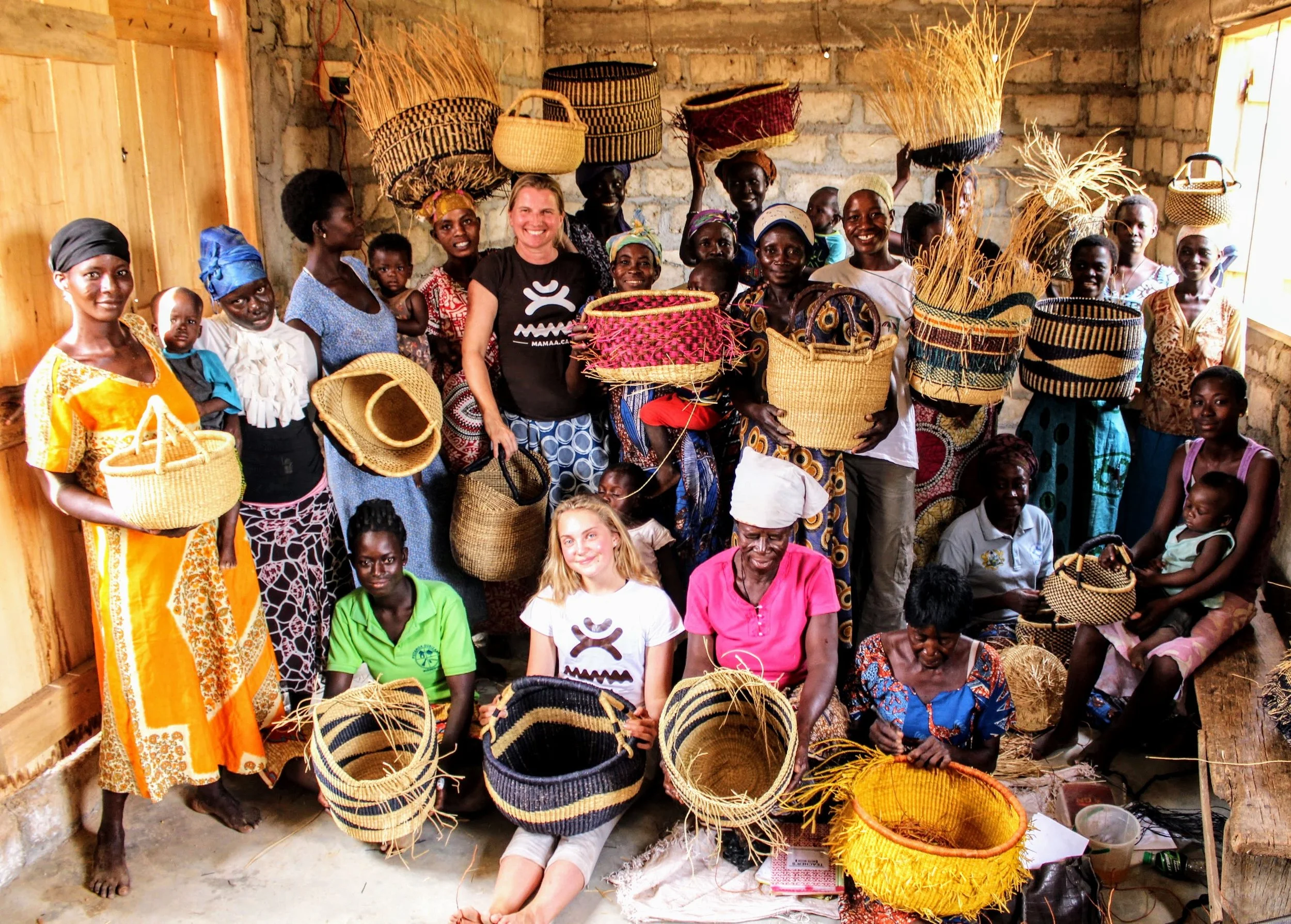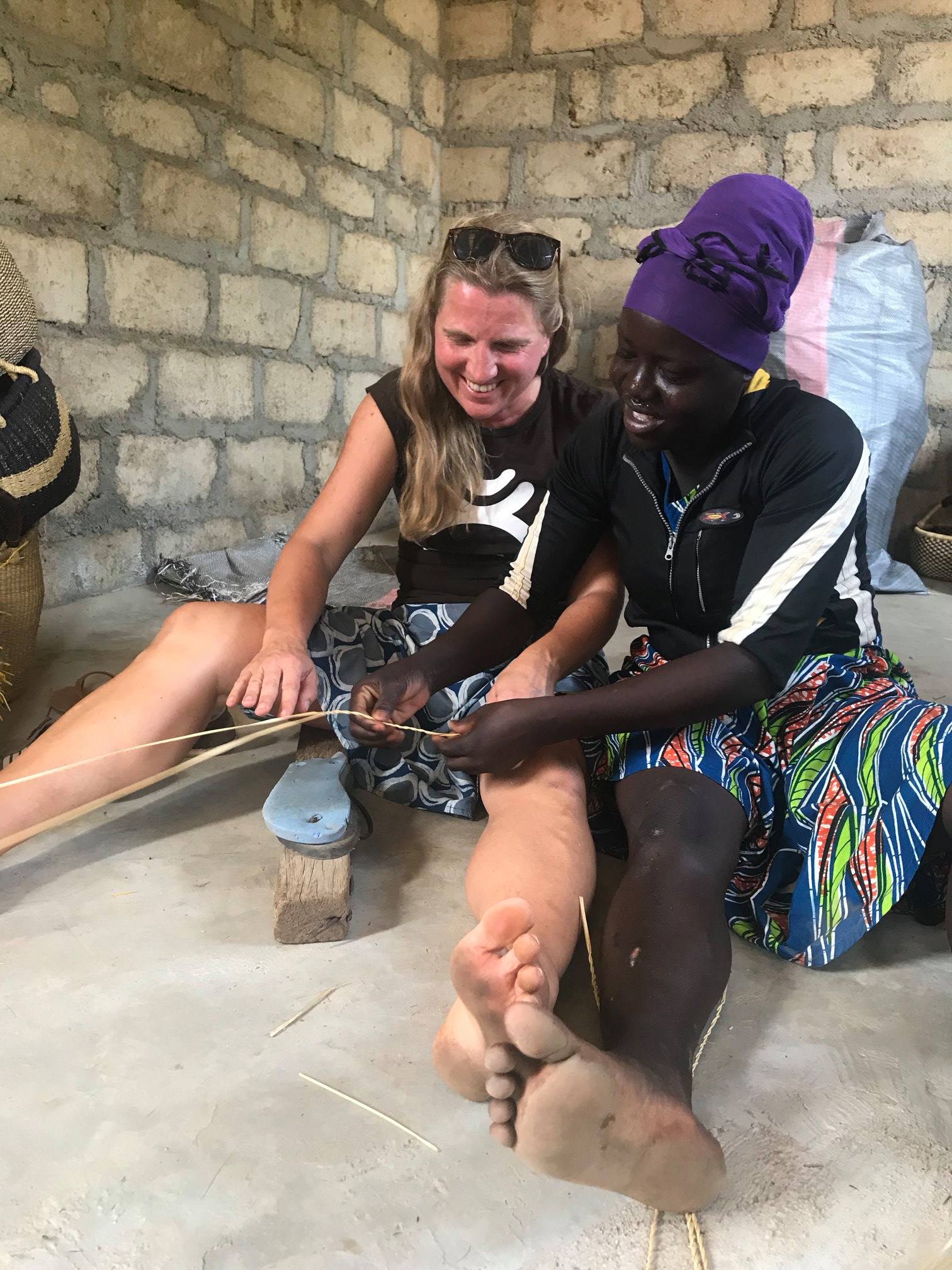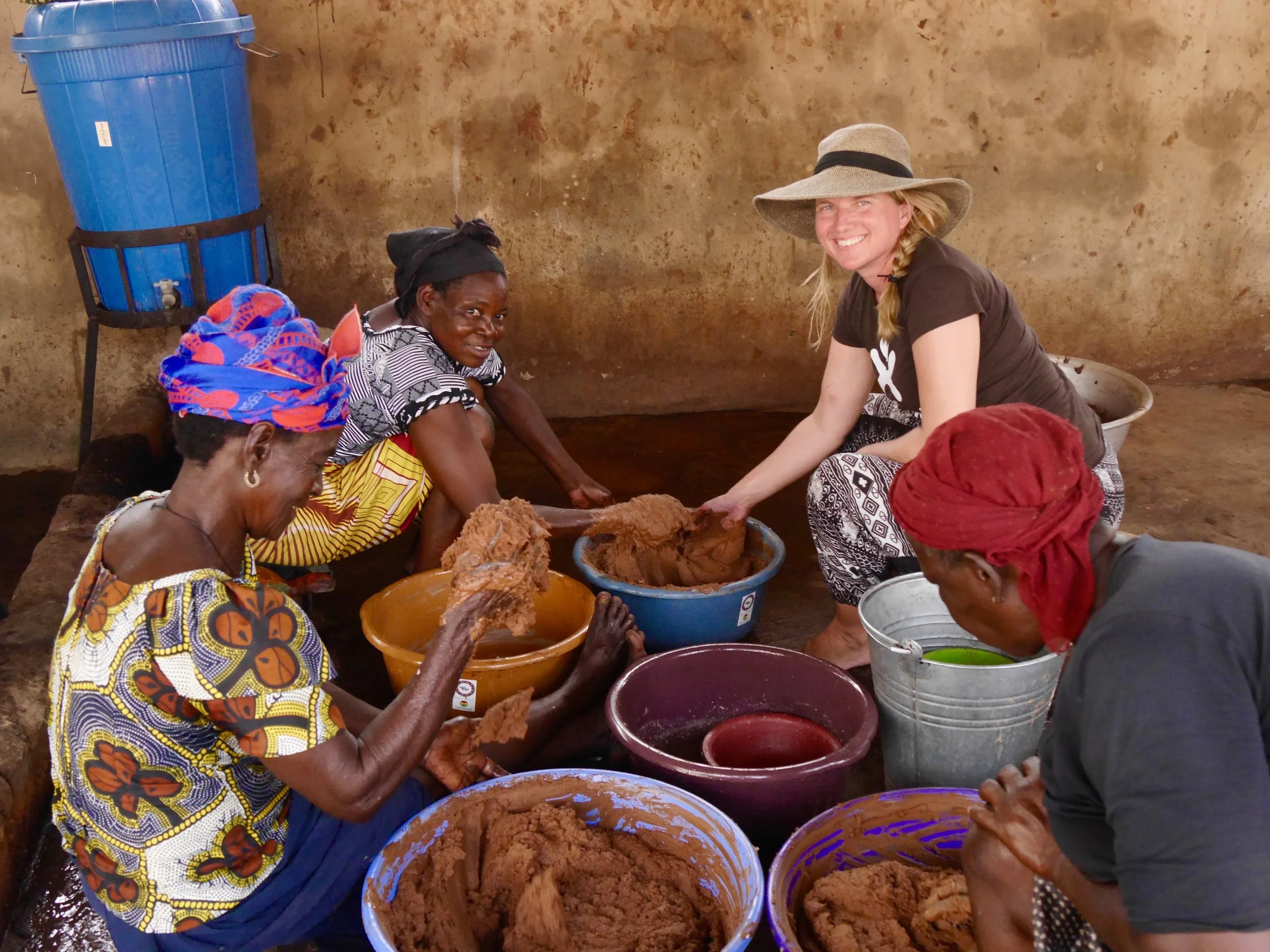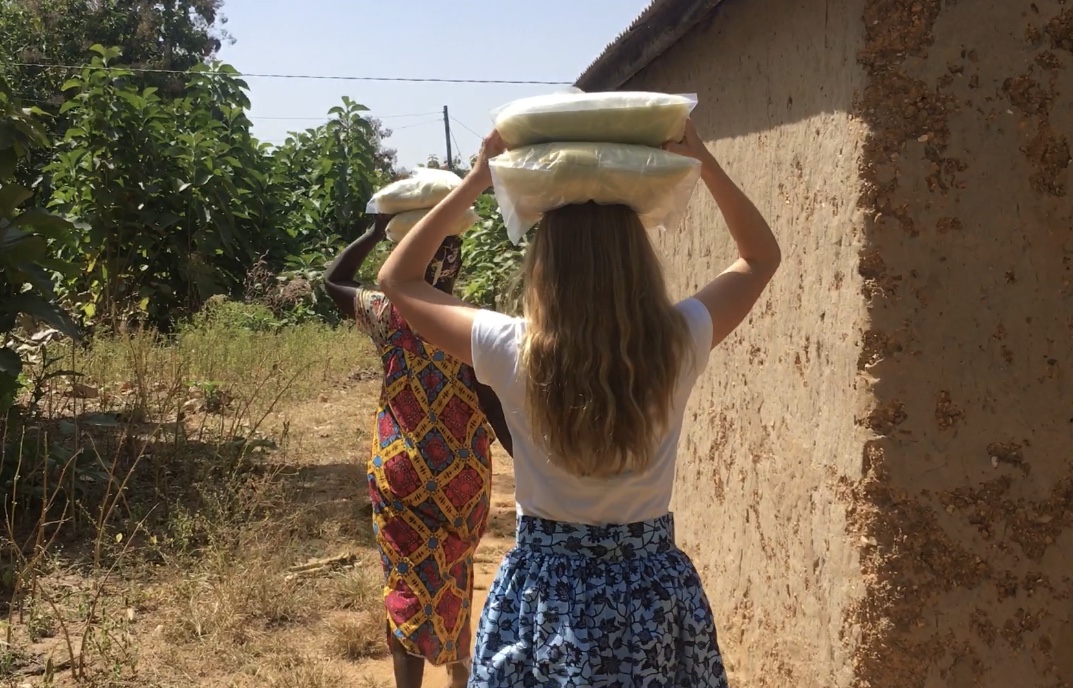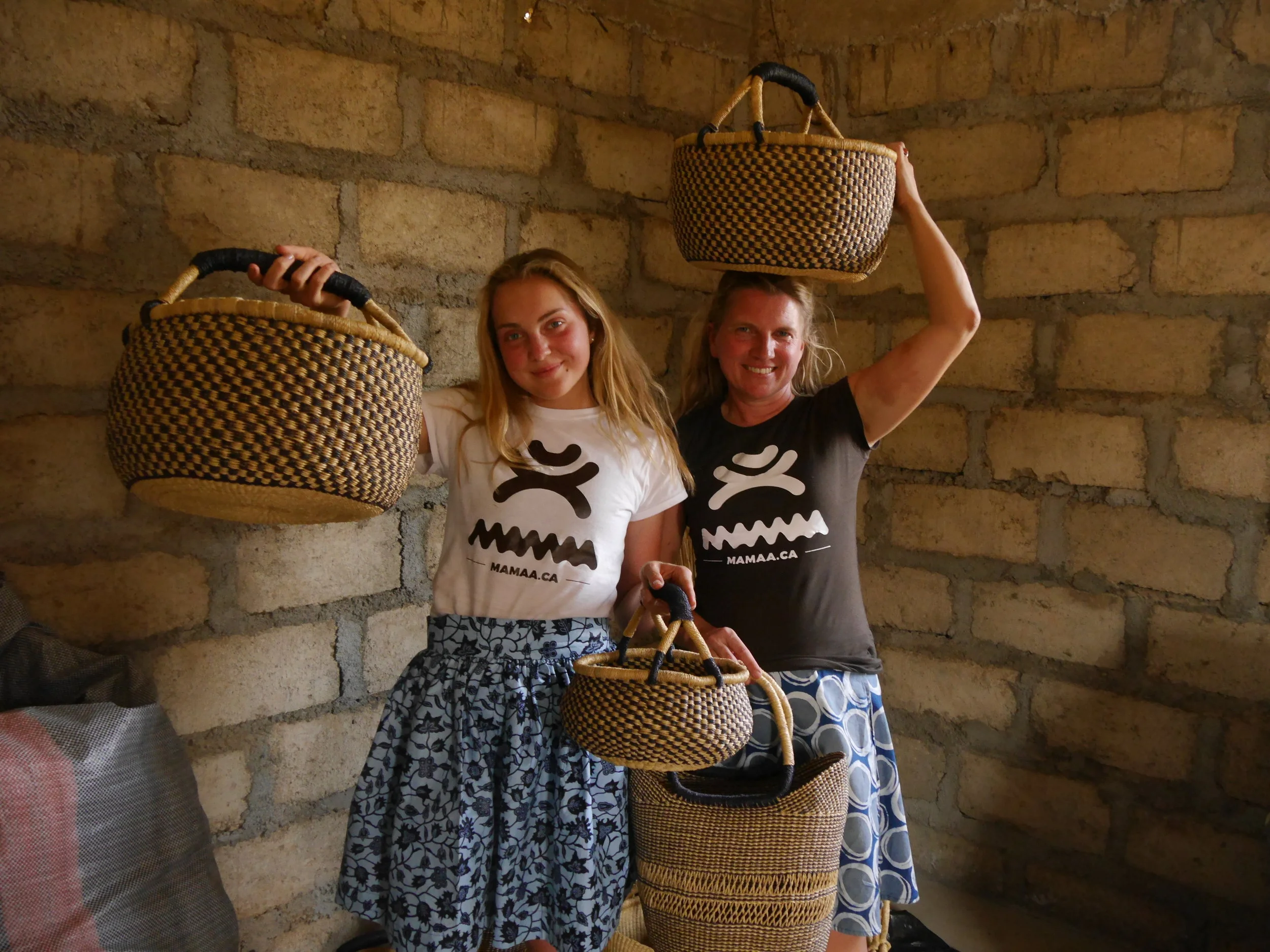Back to Ghana!
Meeting with basket women. Five years ago there were only a handful of women weaving under a tree. Now there are over 60 skilled women and the number is growing. The women also have their own centre for weaving. :-)
At the same time as Canada was experiencing the coldest November in ages I had the opportunity to visit Ghana to meet the shea producers and basket weavers in the northern part of the country.
Ghana is no stranger to me - I visited the country for the first time already 24 years ago as a young volunteer in tree plantation. Some years later, in the beginning of 2000, I worked two years for UNICEF Ghana on child protection issues. During that time I became acutely aware of the problems unequal growth poses to a developing nation. When the wealth stays in the the bigger cities of southern and central parts of the country these areas start to attract the youth from the poorer north like honey. Young girls from poorer families in the north travel down south to work in the markets as headporters. Many of them get exploited and are unable to find of better life or return back home. A lot of my work in UNICEF consisted of trying to find ways for the children to stay in school and get opportunities for further studies and work in their home regions in the north.
Before you can even start the weaving there are a lot of preparation work to be done. Trying to learn weaving myself - with poor results. Better leave it for the professionals :-).
During the last ten years I worked as an executive for an Estonian NGO called Mondo which I established with a group of like-minded friends. As Estonia had only recently regained independence from the Societ Union, all issues related to international development were new. In ten years we were able to build an organisation with good grass-root connections to several poor communities around the world and the capacity to provide sustainable solutions to lift people out of poverty. Ghana was one of the first countries where we started our work: I found a small community in Kongo village through my Finnish contacts with active local people who were willing to work with us. Our common aim was to support quality education for children from deprived backgrounds and find better employment opportunities for their mothers. We helped women to realise which local skills might have the potential to provide income and helped them to organise themselves in two different cooperatives for basket weavers and shea producers. I was visiting the village annually to see how these women worked hard to improve the quality of their products and invested profits for the benefit of their families.
The trip this year was, however, different. It was my first trip as an entrepreneur. After moving to Canada in the beginning of 2018 I started a social business called Mamaa Trade with the aim of helping different women's cooperatives, like the ones in Ghana, find market for their products. It is good to have the skills to produce things but if nobody buys the goods it will not benefit the well-being of the women and their families. The trip this year was special also because I had my 15-year old daughter Kaisa with me. Being a teenager today, she is skilled in social media and helps me on that front.
Taking part in the kneading of the shea butter. One part in the two day long preparation process.
For me everything was familiar, like coming back to second home. So wonderful to see all the familiar faces, how children have grown, and how happy and full of life all the women are. Having their own income really makes life better for these women and gives them self-confidence and brings joy to their lives. My daughter on the other hand was shocked by the disparities between the south and the north. While in the south you can enjoy long sandy beaches, palm trees and tropical fruits, the north provided a very different experience with temperatures closer to 40ºC, dry savannah landscapes, mud huts, domestic animals wondering around, and sandy harmattan winds blowing from the sahara desert. At the same time she was very touched by the local people in Kongo village who welcomed us warmly and gave her the opportunity to participate in their everyday life. Meeting with her long-time penpal, a 13-year old orphan Mercy, was one of the hightlights of the trip. The girls made a film together about a day in Mercy's life. Starting from waking up in a hut beside her sisters and grandmother, going to school and doing the daily chores, studying and going to bed. I will share the film once it is ready.
Ready to take the packed shea back to Canada!
My mission this year was to see how to better support the shea makers. I also visited other shea producers to get ideas from them how to build the capacity of the cooperative. More on those in another blogpost. All in all the trip was very successful and we returned with bags full of fresh shea and new baskets :-).
Someone in Canada can be the lucky owner of these beautiful baskets! :-)

